Kawakubo is considered one of the world’s most influential designers, as you can see from the long list of books we have on her work. Her garments are conceptual, unconventional, and grounded in her belief in gender neutrality. She credits her lack of conventional fashion training for the architectural playfulness her clothes display.
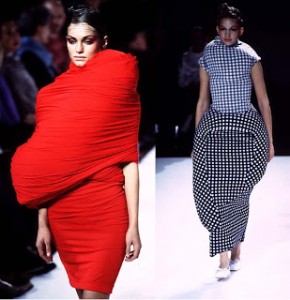
Although she studied fine arts and literature at Keio University, her first job out of university was at a textile company. She worked at first as a freelance stylist in 1967. She went on to found Comme des Garcons in Tokyo in 1973, because she couldn’t find the kind of clothes she wanted to use in her photo shoots. In a recent, rare interview, she explained that she strives: “to create something new, something that didn’t exist before.” She continues that “the more experience I have and the more clothes I make, the more difficult it becomes to make something new. Once I’ve made something, I don’t want to do it again, so the breadth of possibility is becoming smaller.” (WWD, 2011, Jan 4: 1, 8-9)
Comme des Garcons came to prominence in the 1980s as part of the group including Kenzo, Yohji Yamamoto, and Issey Miyake. Each designer had opened stores in Paris by 1978, and in 1981 Yamamoto and Kawakubo put on a small runway show together, in order to maximize their impact. While not intending to be seen as a group, these designers brought a different aesthetic to western fashion: monochromatic, assymentrical, interested in geometric forms, not body display. Their work was immediately hailed as avante-garde and deconstructive of the western-fashion concepts, even while their presentations in Paris legitimized their status as international fashion designers. Kawakubo continued to open shops in international fashion cities. She gave the WWD interview above while she was in Beijing to open her store there.
Despite this note, Kawakubo has remained something of a recluse, rarely giving interviews or participating in public events. She finds her work both hobby and vocation, continuing to strive towards self-sufficiency and unexpectedness, key concepts in her work.
Many designers claim Kawakubo as an important design inspiration to their work. These include Helmut Lang, Marc Jacobs, Donna Karan, Miucca Prada, John Galliano, Alexander McQueen, Martin Margiela, Jil Sander, and others.
Materials we have on Kawakubo:
Rei Kawakubo: Designer Monographs, by Rei Kawakubo
5th floor, Main Stacks Oversize, TT505 .K39 K393 2012
Japanese Fashion Designers: The Work and Influence of Issey Miyake, Yohji Yamamot and Rei Kawakubo, by Bonnie English
Japan Fashion Now, by Valerie Steele
5th floor, Reference Desk, Directory R, TT504.6 .J3 J36 2010
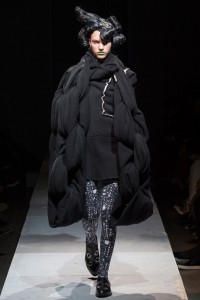
ReFUSING Fashion: Rei Kawakubo, by Rei Kawakubo
5th floor, Main Stacks TT505 .K39 K39 2008
The Legitimatioon of Fashion: Japanese Designers in the French Fashion System, by Yuniya Kawamura
5th floor, Main Stacks, TT504.6 .J3 K393 2001
Comme des Garcons, by Grand France
5th floor, Main Stacks TT505 .K39 G73 1998
Rei Kawakubo and Comme des Garcons, by Deyan Sudjic
5th floor, Main Stacks TT505 .K37 S94 1990
Three Women: Madeleine Vionnet, Claire McCardell, and Rei Kawakubo, Museum at FIT exhibition publication
5th floor, Main Stacks, TT507 .T473 1987
Karan earned fame for designing simple, functional, and good-looking American sportswear for the emerging American working woman. Her work has been compared to Claire McCardell’s for its comfort, ease, and elegance. Her business acumen puts her in the company of many great designers who both controlled both the business direction and the design concept of their companies.
Karan was born in Forest Hills, New York (a suburban area in Queens). Both of her parents worked in the garment center, so it was no surprise when she pursued fashion design herself. While at Parsons School of Design, she caught the eye of sportswear designer Anne Klein, who hired her before she graduated. She moved up quickly in the Anne Klein organization, becoming Klein’s assistant by 1971, and taking over the design studio in 1974 at Klein’s death.
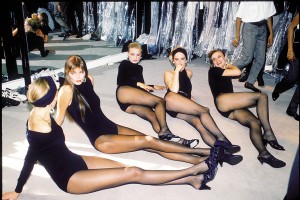
After steady sales and critical acclaim at Anne Klein, Karan secured a backer, and began Donna Karan New York in 1985. Her company, targeting the needs of a burgeoning category of “professional woman”, immediately took off. By presenting busy women with simple, elegant alternatives to the business suit and floppy bow, Karan placed herself in the American sportswear market with a bang.
Her signature look began with a basic bodysuit and stockings. Her clothes tended to be architecturally-draped but simple pieces in neutrals with modern statement jewelry. By 1992, her company had expanded to produce hosiery, eyewear, jeans, menswear, childrenswear, and shoes, as well as a bridge line Falled DKNY. (WWD 1996, Oct. 31: 8) In 1996 her company went public, and in 2001, the luxury conglomerate LVMH bought the design house.

Karan announced her retirement from the company in June, 2015. She plans to spend more time working on Urban Zen, her philanthropic foundation. At this time, LVMH has no plans to hire another designer for the Donna Karan brand, focusing instead on DKNY.
Karan has a long list of fans, from Barbra Streisand, Michelle Obama, Demi Moore, Nigella Lawson, to Helen Mirren, Diane Kruger, and Emmy Rossum.
Materials we have on Karan:
Designer File in FITDIL
Look Books on the 6th floor of the library
Donna Karan New York, by Donna Karan
5th floor, Main Stacks, TT505 .K37 1990
DKNY/NYC: Donna Karan and Friends Celebrate New York City, by Peter Lindbergh
5th floor, Main Stacks, TT505 .K37 L55 1994
Designer DNA Vol. 1, Ep. 2 Donna Karan
Electronic resource (Click link to get to FIT proxy server)
Fashion Lives: Fashion Icons with Fern Mallis, by Fern Mallis
5th floor, Main Stacks, TT507 .M3486 2015
Donna Karan, New York, by Ingrid Sischy
5th floor, Main Stacks TT505.K37 S57 2005
The Journey of a Woman: 20 Years of Donna Karan, by Donna Karan
5th floor, Main Stacks, TT505 .K37 A3 2004
Toledo was born in Cuba and emigrated to New Jersey with her family when she was eight. Fascinated by her grandmother’s sewing machine, she began sewing by making stuffed animals. From the beginning it was the construction that fascinated her, as she says, “I have to take things apart and reconstruct them. That has always been my passion.”
By the time Isabel went to high school, she was making all her own and her sisters’ clothes. After high school, she volunteered at the Costume Institute (MMA), she learning construction techniques as she repaired clothes in the conservation lab and helped dress mannequins. In the evenings she belonged to New York City’s fashionable night life, throwing small fashion shows at clubs or designing costumes for performers. She also took costume design classes at Parsons School of Design and patternmaking at the Fashion Institute of Technology.
She and her husband, artist Ruben Toledo, opened a consignment stand in a boutique in 1985. While Isabel made clothes, Ruben took them to show buyers. They sold first to Henri Bendel and Patricia Field, where they attracted the attention of WWD reporters. Her first official collection received rave reviews. This earned her the backing of an established designer, who shared working space, and produced her line with his own factory.
Toledo’s work remained outside of the NYC Garment Center juggernaut. Her interest in geometric games, playing fabric and body against one another, placed her in the group of designers considered to have a limited appeal, and WWD‘s scornful reviews hurt sales in the US. Other fashion press continued to support her work, however, and by 1991, she showed both in New York and in Paris.
The leap to Europe helped the business, although, like Kawakubo, her clientele remained outside of fashion’s mainstream audience. Because of this, Toledo gave her last runway show in 1998. Despite the consequent fall in press coverage, the line continues to sell to prestigious retailers all over the world, like Barney’s, Bergdorf Goodman, and Nieman Marcus, as well as a loyal private clientele.
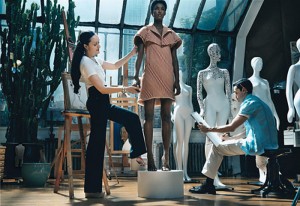
In 2007, Isabel was recruited to bring the Anne Klein line back to an upscale focus. Cathy Horyn of the NYT gave her first collection rave reviews, as did others, but changes in management caused the company to cancel Isabel’s appointment after just two seasons. More recently, Toledo has done collaborations with both H&M and Lane Bryant.
Toledo’s technical mastery brought other opportunities. She has designed patterns for Vogue Patterns, been the subject of two exhibitions at the Museum at FIT, and won several design awards. The most famous homage to her work, however, has been that Michelle Obama chose a dress and coat ensemble by Toledo for the inauguration in 2009.
Materials we have on Toledo:
Look Books on the 6th floor of the library
Isabel Toledo: Fashion from the Inside Out, by Valerie Steele and Patricia Mears
5th floor, Main Stacks, TT505 .T62 S74 2009
Toledo, Toledo: Ruben, Isabel, by Alix Browne
5th floor, Main Stacks, TT505 .T65 T65 2000
Toledo: Ruben and Isabel Toledo: a Marriage of Art and Fashion, by Ruben Toledo
5th floor, Main Stacks, TT505 .T65 A15 1998
Lane Bryant’s 2014 collaboration with Toledo
Little has written in the western press about Basi, other than these sparse facts. She attended the University of Ife, studying theatre. After designing costumes for stage and pageants, she pursued her interest in fashion at the London College of Fashion. After school, she worked as a sample hand for other designers. While doing this, she began making couture bridal gowns. As she built up a clientele, she added daywear pieces and began to sell at boutiques in London.
In 2009 Basi returned to Africa and launched her signature label in Lagos, Nigeria. It was well received, placing her among the top African designers. She continues to produce colorful collections, often using the traditional African Ankara cloth but with updated silhouettes and whimsical details.
Basi shows her line at the Mercedes Benz Fashion Week in Africa. Although her production is sometimes troubled by local shortages, her savvy use of social media have helped her to develop her brand worldwide. Many African stars and socialites wear her label.
Her company also developed projects to provide production training for local workers in the specialized skills needed to bring fashion-related jobs to Nigeria.
We have little on Basi in the library, but there is one book on fashion in Nigeria:
Celebrating Fashion Today, by Essential Interiors Magazine
5th floor, Main Stacks GT1589 .N5 C44 2010
Basi is noted in many articles, but they all state the same few facts:
Another article about Basi’s work
Anamika Khanna was born in Jodhpur. Although her training was in classical Indian dance, a surprise win of the Damiana Fashion Award in 1995 launched her career in fashion. Khanna began taking workshops at the Victoria & Albert Museum in London to learn technique. In 1998 she started her own company and by 2002 Harrods offered her an exclusive contract. In 2004, she launched her ready to wear line, Ana Mika.
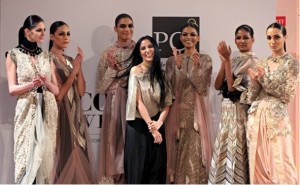
Khanna’s work is sought after because she has a gift for combining traditional forms, like the sari, the chameez, and the lengha, and combining their silhouettes with current western trends, while still taking advantage of Indian embellishment techniques. She works from a studio in Kolkata, and sponsors an embroidery workshop there as well.
Her skill with color and materials has led to invitations to many prestigious shows around Asia, and in 2007 she was one of the first Indian designers to show a collection in Paris. She has also shown in London, as well as becoming a centerpiece of the Lakme Fashion Week in India.
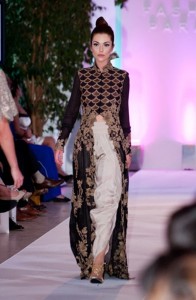
Working with both western tailoring and Indian forms, Khanna has created some new signature garments. One is an adaptation of the Maharastran 9-yard sari, which is draped to create pants. Khanna created a less bulky form of draped pant called the dhoti. She also uses lengha (cropped top and full skirt) combinations with western-type jackets and jeans.
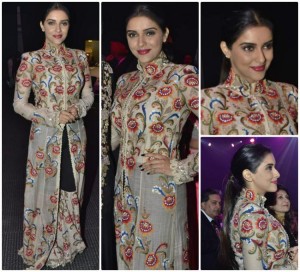
This quirky blend has made Khanna the darling of the Bollywood set, and several top stars wear her work for most public occasions. Her work is also popular for weddings and wedding trousseau, because of her lavish use of embroidery and metallics.
Khanna’s domination of the traditional and neo-traditional Indian markets have made her one of BoF’s top 500 businesses shaping the global fashion industry.
The only book we have that includes Khanna:
Contemporary Indian Fashion, edited by Federico Rocca
5th floor, Main Stacks, TT504.6 .I4 C65 2009
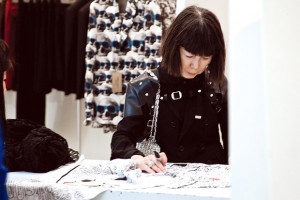
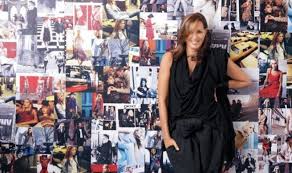
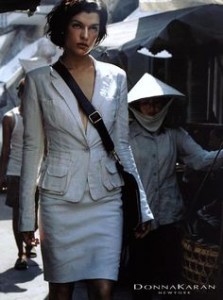
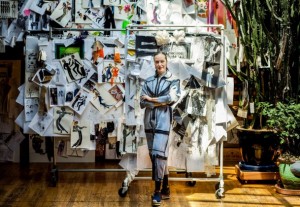
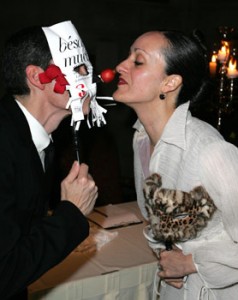


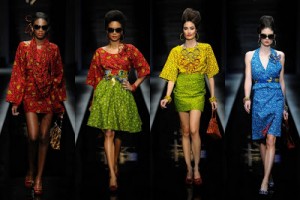
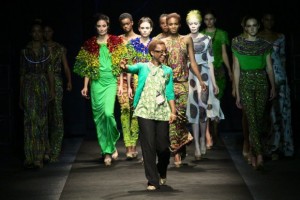

Comments
One response to “Word-Worthy Women: Names You Should Know”
[…] today, I nearly forgot that this evening is the Met Gala! This year the party is in honor of Rei Kawakubo, one of our Word-Worthy Women. That guarantees that the red carpet for this event will display some […]